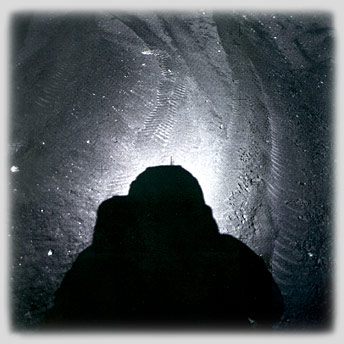
OPOD
What's New
Rays & Shadows
Crepuscular rays
Anti-crepuscular
Cloud shadows
Mountain Shadow
Earth's Shadow Blue Sky
Sunsets
Sunset Mirages
Green Flash
Moonrise/set
Opposition effect
Mechanism
Earth images
Mars
Water Droplets
Rainbows
Ice Halos
High Atmosphere
Links & Resources
Search - Index
123456789012345678

| Opposition Effect - Shadow hiding and more.. |
Apollo 17 astronaut Eugene Cernan's photograph of his own shadow cast on the coal black lunar surface December 1972. His shadow, or more accurately his camera's, appears to be surrounded by a bright glow. Photo from the book Full Moon by Michael Light. �Michael Light, used with permission. |
 |
Cernan's
shadow, like many imaged on the Moon's surface, is surrounded
by a bright aureole. It is an example of the "Opposition Effect". |